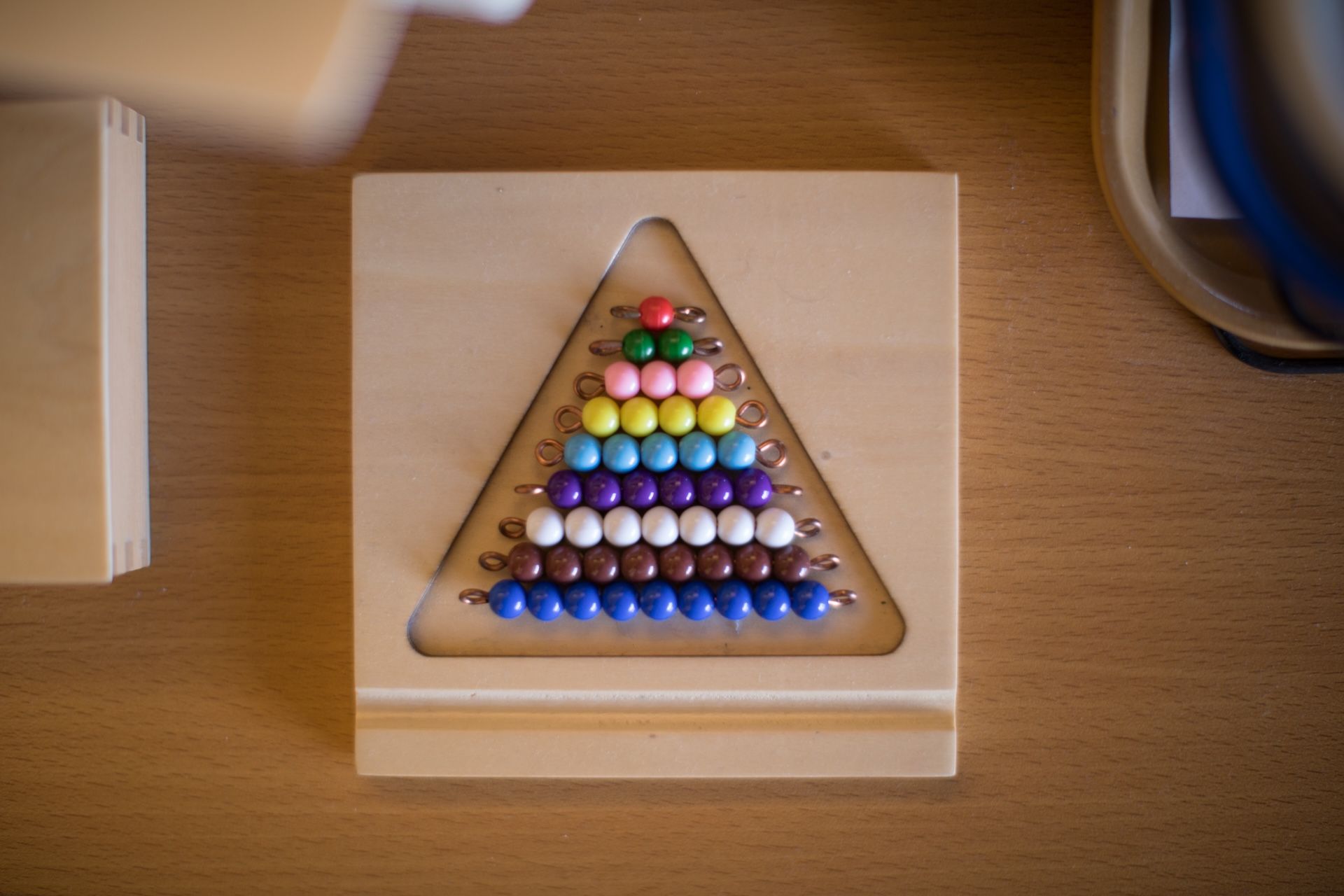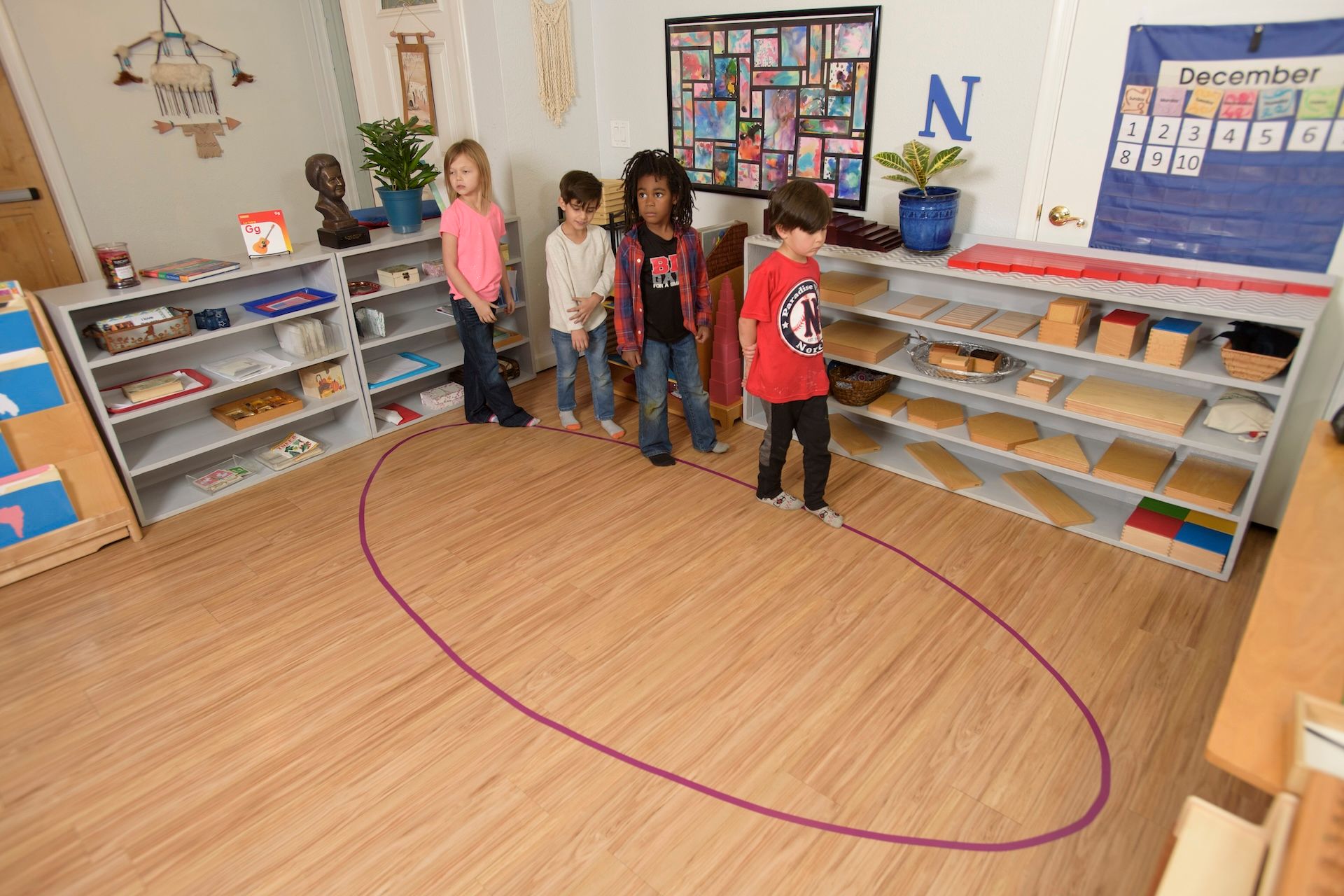Children are balls of endless of energy. In infancy, they wiggle, squirm, roll, and crawl. Once they start going, there’s no stopping them. It can be pretty exhausting for parents, but it’s also a clear sign that this kid is excited about what their body can do. Their successes, like progressing from crawling to walking, gives them confidence and encourages even more learning. As with anything, children need guidance in honing their physical motions. But how do you teach movement?

Movement Skills are Critical for a Child’s Development
One of three key basics of Montessori instruction, motor education, and its activities focus on developing motor skills in ways that are repeatable in daily life and have a practical application. Motor skills fall into two broad and equally important categories:
- Gross Motor Skills – moving with the whole body or the arms and legs. Walking, jumping, skipping, and dancing are all gross motor skills.
- Fine Motor Skills – creating dexterity in hands and fingers, especially hand-eye coordination. Writing, buttoning, and using scissors are some fine motor skills.
Developing Self-Sufficiency
Activities in Montessori education can focus on separate aspects of these or combine fine and gross motor skills together to improve coordination and help children use both in harmony. Most Montessori classrooms use cloth stretched in frames with different types of fasteners—buttons, zippers, or laces—to teach toddlers how to secure their clothes, however they’re structured.
Using frames instead of actual clothing makes learning the skill more comfortable for the child. They can set the object flat and focus both hands on the task or lay it flat on a table, so there’s less fumbling. Once they’ve developed a mastery of fasteners, children can apply these skills to themselves and start choosing and putting on their own clothing, an important milestone in personal responsibility and self-sufficiency.
Developing Grace and Confidence
Montessori education doesn’t just want children to learn how to move. The goal is to give a child grace and confidence in their movements, so they feel comfortable exploring the world. To make this a reality, rhythm and balance are emphasized very early.
In toddler classes, an instructor may lead the children down a straight line or around a circle. The children join in and walk in the same rhythm, sometimes accented with timed clapping. They stay on the line, stay in rhythm, and develop coordination and grace. All of these activities can be copied at home and are easy to understand in the child’s real world.
Montessori education recognizes that there’s more to motor education than P.E. class. The classroom is designed to encourage autonomy and freedom of movement. Children have access to materials at their height. With independent activity and group learning combined, we maximize engagement and continually find new opportunities to keep our students challenged.
Creating practical activities will hone important skills while making connections in young minds that traditional public school education doesn’t always allow. Montessori classes focus on funneling their students’ energy into entertaining, educational activities, so they develop a passion for learning that lasts a lifetime.
The post Getting Little Fingers Moving: The Importance of Motor Education appeared first on Pebblecreek Montessori.
Hours
MONDAY - FRIDAY
HALF DAY: 8:30a – 12 noon
ACADEMIC DAY: 8:30a – 3:30p
EARLY CARE: 7:00a – 8:30a
AFTER CARE: 3:30p – 6:00p
OFFICE: 8:00a - 4:00p
Programs
Connect
Pebblecreek Montessori




